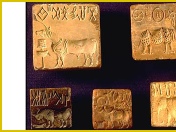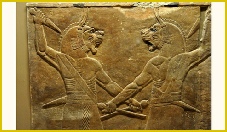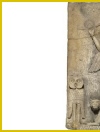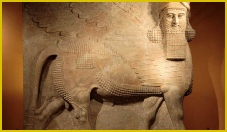












Last Gasps
Paranormal



The South’s science-based team!
Our trained investigators are here to believe you. Most importantly, we are here to solve the problem...no matter what it takes. Our services are always FREE.

© 2023 Last Gasps paranormal. Links | Terms and Conditions







Western Demons


Disclaimer: This work has been completed as an educational tool for students of history, religious and paranormal studies. The author wishes to discourage any use of this work in conjunction with paranormal field investigations of demons.
Presented by Kyle T. Cobb, Jr. to the audience of Dragon-Con 2013
Nos tibi credere.
A Literary History
When it comes to the field of demonology there are two paths to enlightenment: Understanding the demons place in history and face to face encounters.
Today we will look at a small slice of history to help understand how mankind has interacted with demons in our short recorded history.
For over 1500 years, the Catholic Church has maintained an office charged with detecting and eliminating demons. Since 1968 the Catholic Church has officially investigated over 3000 cases of alleged demonic influence (though former chief Vatican exorcist Father Gabriele Amorth claims to have done over 30,000 exorcisms). During these 4 decades of investigation there have been only a handful of cases where true demonic influence has been “proven.” Depending on the source, the number is as few as 4.
4 out of 3000.
How does this balance with the vast number of popular occult books that litter the shelves of local book stores?
One of the first issues a researcher will find in reading books on demonology is the tendency of many religious types to start out with a firm definition of what a demon is but then to digress into assigning mental and physical illness to demonic influences.
I cannot tell you how many books I really enjoyed only to get to the point in the book where the author jumps the shark and blames everything from multiple personality disorder to chewing gum on demonic powers.
So, before we look at the history of demons, it is important to set certain guidelines, or definitions. This will allow us to converse based on equalities and not assumptions.
Definitions
Demons
We will begin this definition by establishing that which it is not. While these criteria are arbitrary, they are necessary.
- A demon has not previously been a human.
- A demon (or subject under the influence of a demon) is not exhibiting normal symptoms of a scientifically definable physical or mental disease.
- A demon must have outward manifestation beyond the explainable abilities of an associated host.
- A demon is assumed to be of limited power and therefore at a lower level than a primary deity.
There are 5 generally accepted characteristics that must be met for a demon to be present:
- Will
- The demon must express a distinct will outside of its host and exercise that will.
- Promise of a demon to return or harm the host.
- Emotion
- A demon will react to emotional stimuli or threats to itself that would not ordinarily harm the host.
- For example, reaction to the threat of exorcism or banishment
- Intellect
- Display of knowledge beyond a natural source of the host
- Self-Awareness
- The claim that the personality is unique and distinct from the host’s personality.
- Speech
- Literature is filled with cases of the supposed demon speaking through its host and having a distinctly different personality or vocal pattern. This includes speaking languages unknown to the host.
A few wild assumptions
- The modern scientific mythology of today holds that homo sapiens evolved 200,000 years ago in central Africa.
- Modern scientific mythology also asserts that humans began speaking around 100,000 years ago.
- The earliest known writing so far discovered is from a Harappan settlement in Pakistan and dates to 4,100 BC.
- The earliest decipherable surviving writing system was developed around 3,600 BC (5,000 years ago) in Mesopotamia as a system of symbols to represent numbers.
- This is not to say that there was not symbolic representations prior to this point. Before the Mesopotamian era, there is only art, such as the face of a lion from Angoulême, France created 27,000 years ago or even the cave paintings in Malaga, Spain created 43,500 years ago. While the symbols give us an impression, they do not tell a story. And more importantly, they give only interpretive information.
While these dates may be off by thousands of years, the point remains the same, we as humans only have record of a tiny fraction of our interactions with the universe around us.
So, now we have a baseline to begin the story of demons.
We start at the very end of the story of mankind and the beginning of history.
Gilgamesh
One of the most complete of the early stories is the epic of Gilgamesh. And this is where the first concrete references to demons reside. In the ancient Sumerian texts, there are three basic classes of demons:
- Disembodied human spirits
- Half-monster, half-human entities
- Non-human forces
Utukku
The most prevalent in the Gilgamesh saga is the Utukku which is the spirit ghost of Gilgamesh’s companion Eabani. Gilgamesh asks the god Nergal to return Eabani to him and the god complies. The term Utukku eventual changes in Sumerian and Babylonian text to be a kind of demon that haunts barren places and harms man.
Often associated with the breaking of a taboo, the Utukku is described as prowling like a dog and faster than a falling star. The female, called a Lamashtu, has a hairy body, a lion's head, donkey teeth and donkey ears. She also has long fingernails and the feet of a bird.
One reference in a spell describes the creatures:
“A door cannot exclude them,
A bolt cannot turn them back;
They slither through the door like a snake,
They blow in by the hinge like the wind,
They bear off the wife from a man’s embrace,
They snatch the son from a man’s knee.”
-Extract from a Mesopotamian incantation
Alu (Gallu)
When Anu wants to avenge his daughter Ishtar on Gilgamesh and Eabani, he creates a celestial bull named Alu to attack them. Like the Utukku, this term evolved. Alu seems to be derived from the Sumerian term Gallu which means “tempest.” Ironically as these terms blend Gallu also refers to a bull spirit that hunts at night.
Lilu
The lilu are the Babylonian prototypes types for the incubus/succubus legends. The Lilu, like their modern counter parts, are represented as having sex with humans to steal life-force or to become impregnated. Like the alien abduction phenomena, the real origin of these demons make be related to sleep paralysis rather than supernatural. Thanks to bad translations and bad history, the Lilu have been retroactively branded as the origin of the Jewish Lilith mythology. Contemporary translations firmly assert that that the Lilith linkage is incorrect.
Shedim
With the name derived from the Babylonian name meaning “to be violent”, the Shedim are the winged bulls used to guard temples in Babylon and Assyria. They are referenced to in both curses as well as spells of protection.
In Hebrew they are called Sedu and are referenced in Deuteronomy 32:17 as well as in Psalms.
Transfer of Religions
For a moment, it is important that we pause for a necessary digression… The concept for the transfer of religions.
There are 3 primary methods of Transfer:
- Neighbor to neighbor
- Trade
- Conquest
As we talk about Babylonian, Egyptian, Jewish, Greek, Roman cultures and the evolution into the modern western mythology of demons, all three transfer methods play a role.
Now moving forward let us look briefly at the case of the Jewish people.
If we put the Jewish culture into 2000 BC context they are small tribe that recently adopted monotheism. Historically, there are linguistic elements to suggest a polytheistic origin but for our purposes today they are the only monotheist in their region at that time.
So as a small tribe, surrounded by divergent religions, they preserve their cultural identity by the enforcement of cultural traditions to isolate themselves from their neighbors. This is accomplished in several ways:
- Conversion of completing religions gods to lesser gods/demons
- Branding any completing religions gods as Evil.
- Prohibiting breeding outside the tribe as well as self-imposed tribal isolation.
- Unique diets
- Maintaining tribal languages
- Maintaining secret rites for the initiated.
So having made a minor digression, I return to mentioning that the Babylonian demon Shedim would find its way into both Jewish text and Jewish culture. In fact, many of the foundations of understanding of demons in the western world can be traced directly back to Babylonian texts.


Father Gabriele Amorth, former head of the Catholic Office of Exorcism and author of An Exorcist Tells His Story.



Earliest known writing is from a Harappan settlement in Pakistan and dates to 4,100 BC.

An image of Gilgamesh presently located in the Louvre.



Utukku

A Lilu



Shedim
| Paranormal Books |
| Apparitions |
| Cryptids |
| Demons |
| Orbs |
| Poltergiest |
| Residual Hauntings |
| Shadow People |
| West Demons |
| Ouija and Zozo |
| Exorcisms |
| Anneliese Michel |
| Ronald Hunkeler |
| Anna Ecklund |
| LaToya Ammons |
| George Lukins |
| Christian Demon texts |
| Roman Rite 1614 |
| Roman Rite 1998 |
| Eastern Demons |
| FAQ |